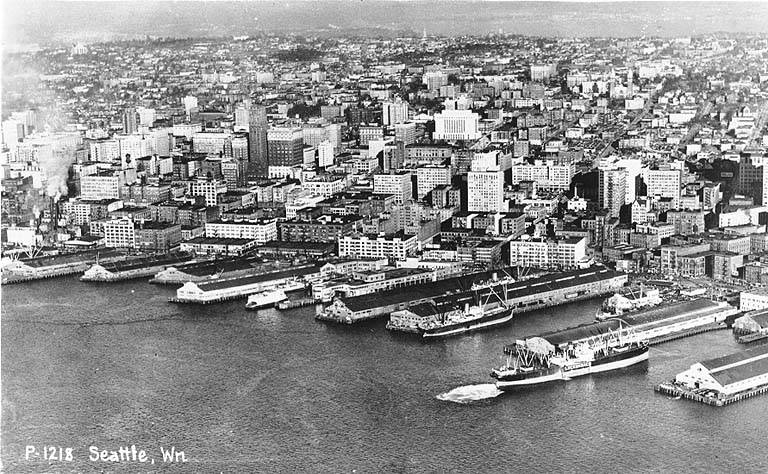
Reading tributes written to Jim Ellis, the noted civic leader who died this past week, two things jump out: personal commitment and signature projects.

Ellis’s very large personal investment in community building is legendary. It begins with the touching story of his reaction to his older brother’s death in World War II. Hearing Ellis describe his transformation into a civic workhorse puts most of us to shame for our modest efforts. He certainly did well by doing good, but few will succeed at, or even attempt, the life he led.
And the projects! These can be recited from memory: Metro and Lake Washington, Forward Thrust (Kingdome, pools, Marymoor and Luther Burbank and Freeway parks, wastewater lines, and almost a rail transit system), farmlands preservation, Convention Center, Mountains to Sound Greenway. Most of us feel fortunate to have success in one big thing in our lives, and Ellis had half a dozen.
But between these two threads of tribute lies something else that is less easy to describe: a Seattle-accented way of getting things done.
When Ellis came onto the scene in the late 1940s, Seattle was in a slump. Having gotten all puffed up with airplane factories and shipyards during the war, the region was still figuring out how to transform itself into a civilian economy. Seattle had experienced remarkable periods of growth in the past, and there was no reason to believe that the post-war slump would last. Indeed, the region grew at a remarkable clip in the 1960s and 1970s.
The problem was how to grow with strength and grace. Ellis did not approach this question with big, elaborate master plans. Rather, he took on large, discrete problems and opportunities, perhaps assuming that the smaller ones would get resolved in time.
But the question persists: How did he get all that stuff done? Anyone with gauzy notions that things were easier back then — the myth of the ten white guys with cigars calling the shots from the Rainier Club — has not studied much regional history. Getting stuff done was hard back then, too.
A few items from the Ellis method could be instructive to us today:
- Regionalism. In 1940, more than 70 percent of King County’s population lived inside the Seattle city limits (which ended at 85th Street on the north). Today that figure is 32 percent. Ellis could see that the growth action would be outside of Seattle, and although suburban cities were mostly quite small at the time, they got a powerful seat at the Metro table. Ellis lived in Bellevue most of his adult life, and understood that the sun does not rise and set in Seattle.
- Localism. Regional is good, but not for everything. Metro built trunk lines and treatment facilities, but did not take over local sewer lines. Metro’s unused latent powers included regional parks and water systems, but not local services like police and fire.
- Non-partisanship. There used to be a cliché that there are no Republican or Democratic sewer lines. That notion, that local investments are not partisan matters, is borne out by political science, but often ignored in our time. Ellis was thought to be a Republican, but knew that his priorities had nothing to do with partisan politics.
- Inclusion and decisiveness. Ellis was legendarily inclusive, willing to address a dozen people at a sportsmen’s club as readily as the Downtown Rotary club. But he got decisions and action in a reasonable time frame. Much of this happened before we had the State Environmental Policy Act and other laws that slow down decision-making, but long delays in other projects of the time, like the SR-520 bridge, show that the Ellis style made a difference.
- Long-term funding. Ellis was a municipal bond attorney, so it is not surprising that he favored long-term bonds as a way to pay for things. Bonding backed by property taxes and utility rates has the advantage of ensuring that future generations who will benefit from a project will contribute to it. The 60-percent vote requirement for general obligation bonds and overall property-tax fatigue have made this source of funding far less attractive. Instead we are stuck with short-term levy lid lifts, sales and car tab taxes, lotteries, and other weaker revenue sources.
There may be another Jim Ellis in our region’s future, but the odds of such an individual’s emerging are long. Leaders today would, however, be foolish to ignore the methods behind his success. The Jim Ellis playbook should be dusted off and referred to often.
Discover more from Post Alley
Subscribe to get the latest posts sent to your email.
